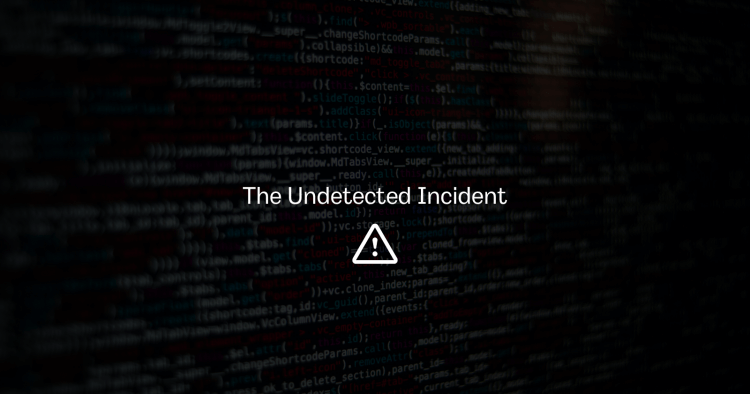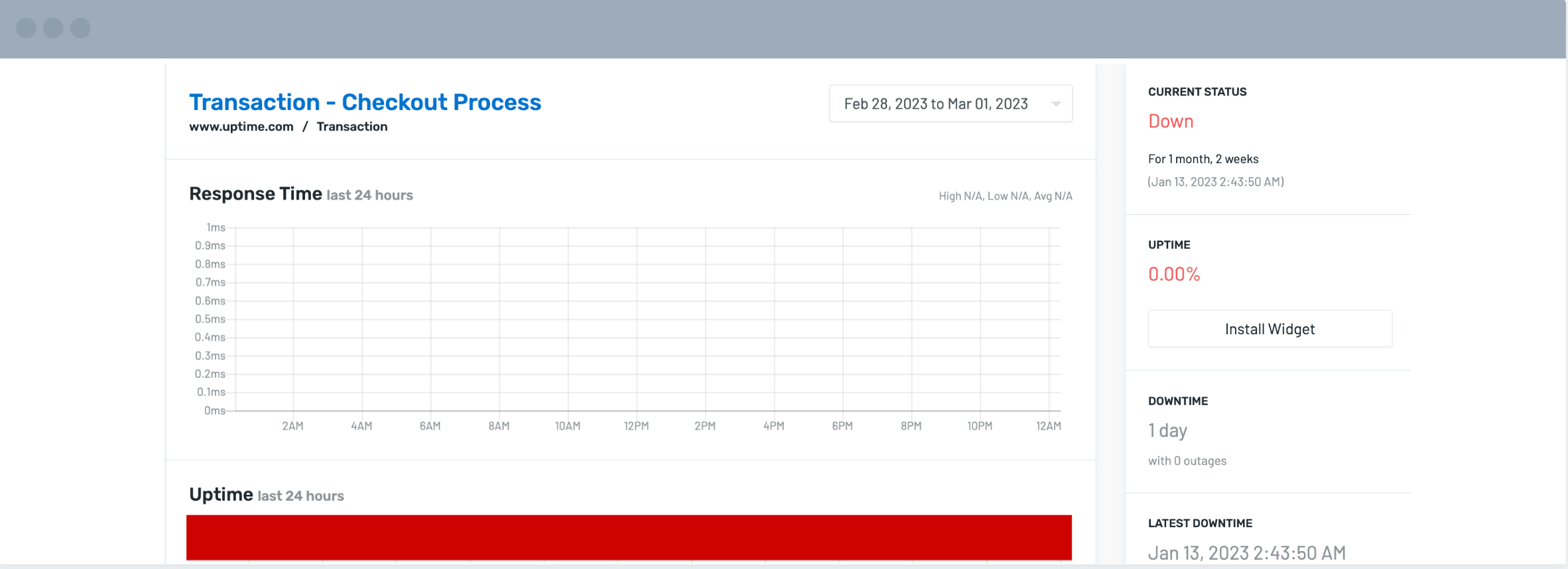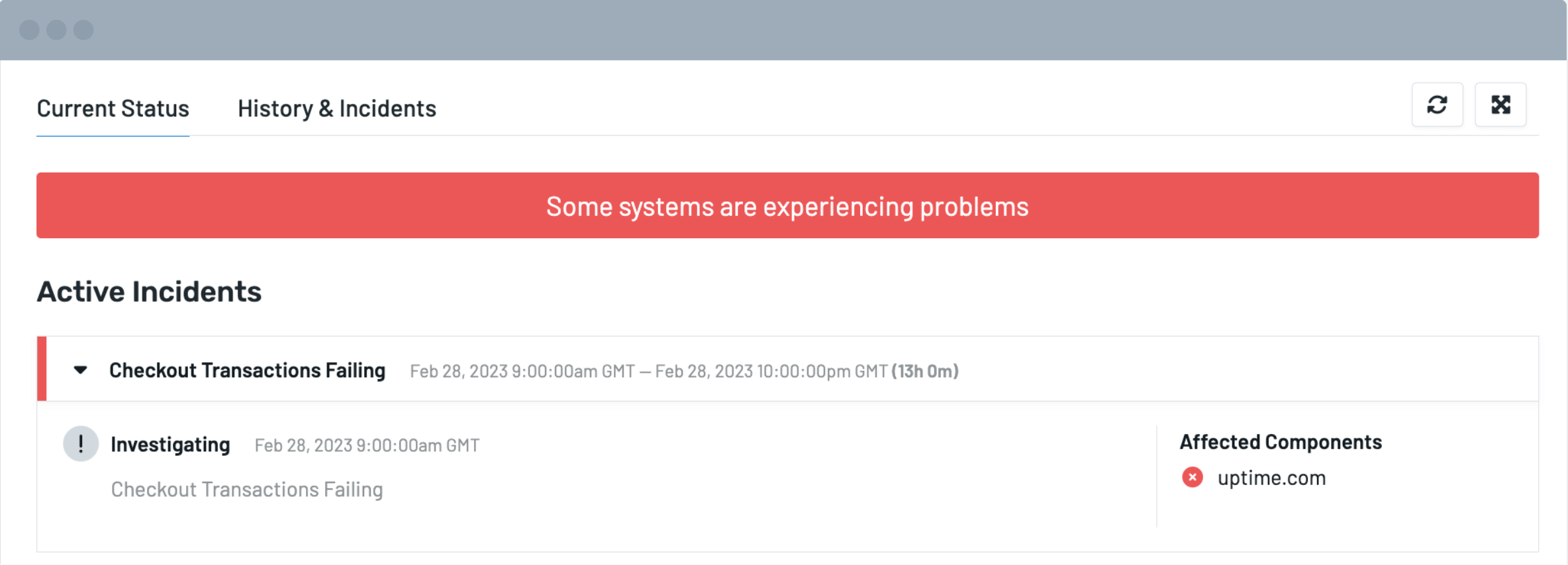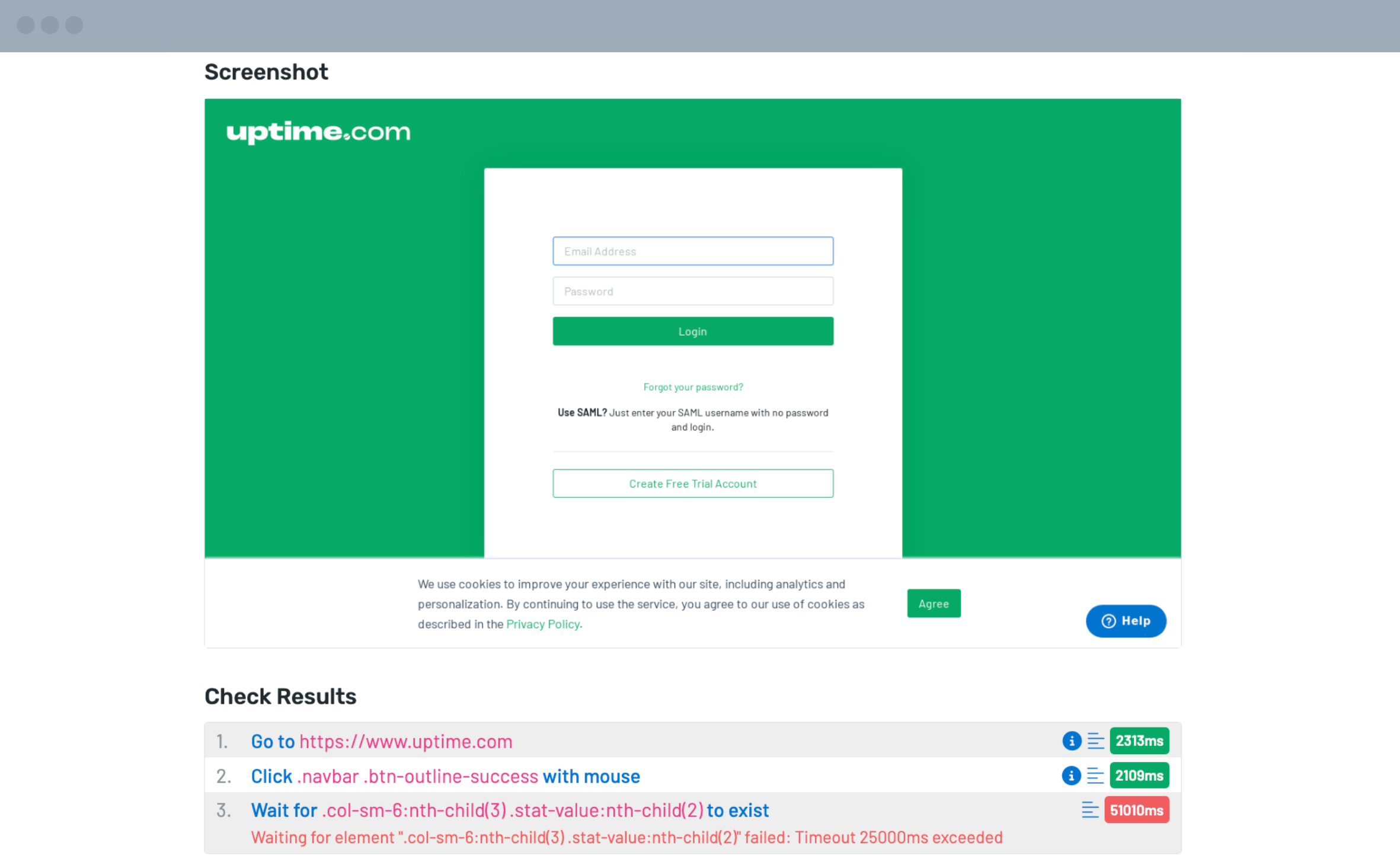
How Synthetic Transaction Monitoring Provides Complete Site Visibility
We’ve all been in the situation before: it’s Friday at 5 PM and the only on-call engineer available to handle incidents is about to hit the slopes.
Unfortunately, at that very moment, a customer reports to support that they are unable to access the company’s ecommerce website to complete a purchase. Internal monitoring systems seem quiet and services appear available on internal health dashboards.
The incident bridge is started, the on-call is paged and you have an incident on Friday at 5PM. The Incident Managers first question on the bridge – “How many customers are experiencing this outage and what regions are impacted?”. Without synthetic transaction monitoring in-place answering this question takes time which translates into revenue loss – every second counts.
These events can seriously impact brand recognition as every second of downtime counts against your committed SLA to customers and of course can result in huge revenue losses. While complete website outages are less frequent nowadays due to improved internet resiliency and system architectures, outages can still occur and they can be particularly challenging to solve or root cause when regional or localized incidents occur.
Customers today are accessing websites and services from all over the world via thousands of internet providers, endpoints, networks, and devices.
Expand Monitoring Past Just Up/Down

Most modern companies employ basic website monitoring to check the availability of their website and specific pages which does help to ensure that they return valid HTTP responses. While these up/down checks are essential for detecting major site outages and ensuring global reachability, they do not provide a complete picture of service availability.
This is where Synthetic Transaction monitoring comes in with its ability to provide unparalleled visibility.

What is Synthetic Transaction monitoring? It is an impressive capability that leverages repeatable transactions or specific user flows on a site that are business critical, such as an ecommerce checkout process or a site login functionality. These transaction checks can be scripted by hand or by recording transactions using a built-in script recorder in a browser.
An SRE or Operations Engineer can create a script that steps through key business transactions that are executed from their websites. Running these scripts on a frequent basis (we recommend a minimum of every 5 minutes) you can detect anomalies, failed steps, missing validations, or backend responses that could result in failed processes, such as a checkout failure or a response failure from a service or component on the site.

In addition, these transaction checks can be run from multiple points of presence (POPs) or locations worldwide using the same script.
This comprehensive approach offers complete visibility to SREs, Operations Engineers and Developers to ensure that customers can successfully access your site and execute key business transactions from anywhere in the world.
The Outcome

In the scenario originally presented above, if the company had implemented synthetic transaction monitoring for their business transactions then the on-call SRE would have been alerted to the failure before they hit the slopes.
This would have provided the Operations Team or NOC early visibility of the issue allowing them to take action before customers began reporting it.
The incident management team could then have been engaged and a communication could have been posted on the company’s Status Page and support portal to notify customers of the outage, lower MTTA (mean-time-to acknowledge) and MTTR (mean-time-resolution).
Why Uptime.com Synthetic + Basic Checks? – You need them both!

The Synthetic Transaction checks offered by Uptime.com are highly advanced, real Chromium-based transaction checks that run and execute actual real user sessions against your site. Unlike simulated or virtual sessions, these checks ensure that your entire site is loaded and accessed just like a real user would access it.
This advanced check type provides unparalleled visibility into your site’s availability and when used in conjunction with Basic checks it provides a complete picture of your site’s availability, performance and accessibility by customers.
With an expansive and ever-growing list of check server locations, you can be confident that your transactions are being successfully tested from around the world or focused where the majority of your customers access your service.
If your site is not currently being monitored with synthetic transaction checks, we highly recommend that you sign up for a free 14 day trial of Uptime.com (no credit card needed) to gain visibility into your most critical transactions.
As always our dedicated Support and Product teams are available to provide guidance, best practices and recommendations to help you optimize your monitoring efforts. We are committed to providing the best solutions that ensure your teams have early visibility into incidents so you can take action and minimize the impact to your customers.
We look forward to meeting your monitoring needs and helping you achieve greater peace of mind.
Minute-by-minute Uptime checks.
Start your 14-day free trial with no credit card required at Uptime.com.
 Uptime.com Blog
Uptime.com Blog


